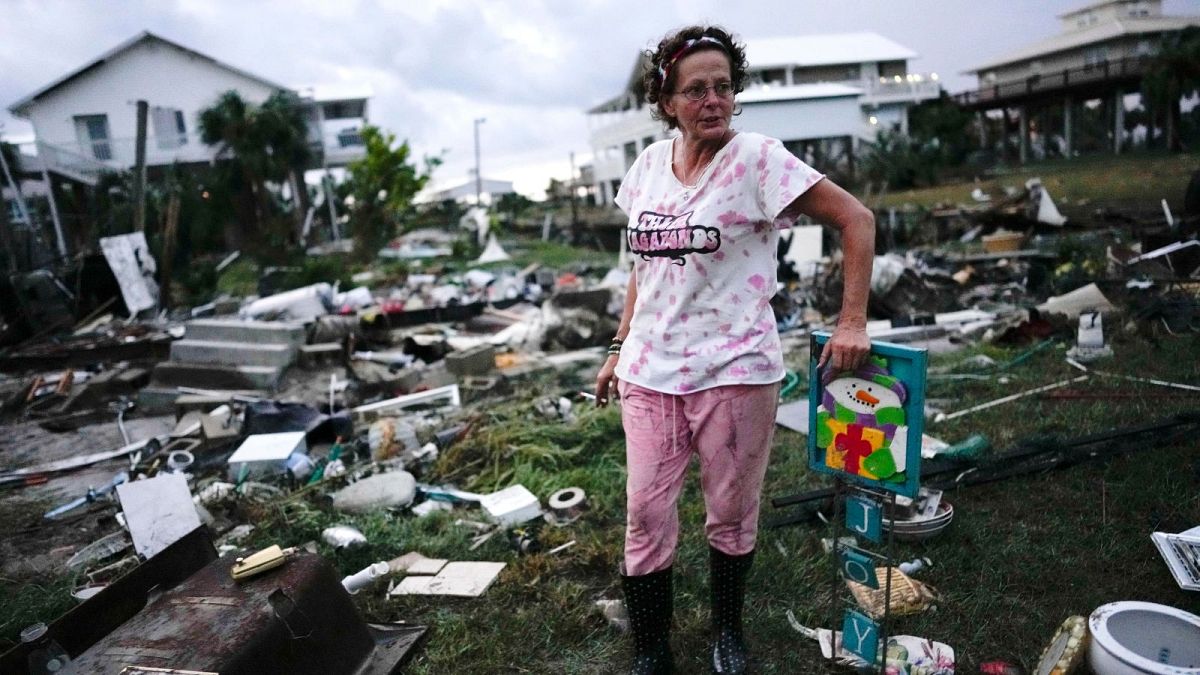2024 Atlantic hurricane season forecast to be ‘extremely active’ due to hotter oceans and La Niña
This is the highest prediction for hurricanes that CSU has ever issued with its April outlook. The Americas have been told to brace for an ‘extremely active’ hurricane season this year. Hurricane researchers at Colorado State University (CSU) in the US are predicting 11 hurricanes in 2024, spurred on by a hotter Atlantic and a […]


This is the highest prediction for hurricanes that CSU has ever issued with its April outlook.
The Americas have been told to brace for an ‘extremely active’ hurricane season this year.
Hurricane researchers at Colorado State University (CSU) in the US are predicting 11 hurricanes in 2024, spurred on by a hotter Atlantic and a switch to ‘La Niña’ conditions.
This is the most hurricanes ever predicted by the expert unit since it began issuing an April outlook in 1995.
Researchers stress there’s still a high degree of uncertainty about how the season will unfold, but are urging residents along the US coastline and in the Caribbean to prepare.
“It takes only one storm near you to make this an active season for you,” says Professor Michael Bell, one of the authors of this year’s forecast.
How will La Niña increase the chance of hurricanes?
There are two key factors behind the forecast for a particularly lively Atlantic hurricane season, which runs from 1 June to 30 November.
The first is record warm tropical and eastern subtropical Atlantic sea surface temperatures. Since a hurricane’s fuel source is warm ocean water, an active season is clearly on the cards. A warm Atlantic also leads to lower atmospheric pressure and a more unstable atmosphere: prime conditions for hurricanes.
We are currently emerging from an ‘El Niño’ phase; a naturally occurring seasonal climate phenomenon associated with surface warming of the tropical Pacific Ocean.
El Niño alone does not explain record high ocean temperatures around the world, however – especially not in the Atlantic. “Heat-trapping greenhouse gases are unequivocally the main culprit,” WMO Secretary-General Celeste Saulo said recently.
The second factor is that La Niña conditions are set to dominate by the peak of the Atlantic hurricane season from August to October, according to the CSU researchers.
La Niña tends to decrease upper-level westerly winds across the Caribbean. This results in reduced vertical wind shear (variation in wind speeds) which favours hurricane formation.
Given the combined signals of an extremely warm Atlantic and a likely developing La Niña, the forecast team has a “higher-than-normal confidence” at this time of year that America is in for a very active hurricane season.
23 named storms are predicted this year
In total, the CSU Tropical Weather and Climate team is predicting that 23 named storms will strike during the Atlantic hurricane season.
Of those, researchers forecast 11 to become hurricanes and five to reach major hurricane strength – with sustained winds of 111 miles per hour (179 kph) or greater.
Looking back on decades of historical hurricane records, the experts have spotted some similarities to 1878, 1926, 1998, 2010 and 2020 seasons.
“Our analog seasons were all very active Atlantic hurricane seasons,” says Phil Klotzbach, senior research scientist in CSU’s Department of Atmospheric Science and lead author of the report.
Before now, the highest number of hurricanes predicted in April was nine. This time last year six hurricanes were predicted. There ended up being seven; the most destructive of which was Hurricane Idalia – which made landfall in the Big Bend region of Florida in August 2023, directly killing eight people and causing $3.6 billion (€3.3bn) in damage.
The researchers predict that 2024 hurricane activity will be about 170 per cent of the average season from 1991–2020.
Where is most at risk from Atlantic hurricanes?
Coastal residents are, as usual, advised to take proper precautions.
The report calculates the probability of major hurricanes (category 3 or greater) making landfall in particular areas.
This year, there is a 62 per cent likelihood of a major hurricane hitting the entire US coastline, dropping to 34 per cent for the US East Coast, including the Florida peninsula.
For Caribbean residents, major hurricane chances stand at 66 per cent.
The team also provides probabilities of named storms, hurricanes and major hurricanes tracking within 50 miles (80km) of: counties along the Gulf and US East Coast, hurricane-prone coastal states, Mexican states, Canadian provinces and countries in Central America and the Caribbean.
Considerable atmospheric changes can occur between April and peak season, and the forecast is only intended to provide a best estimate of activity. Further updates are due on 11 June, 9 July and 6 August.














